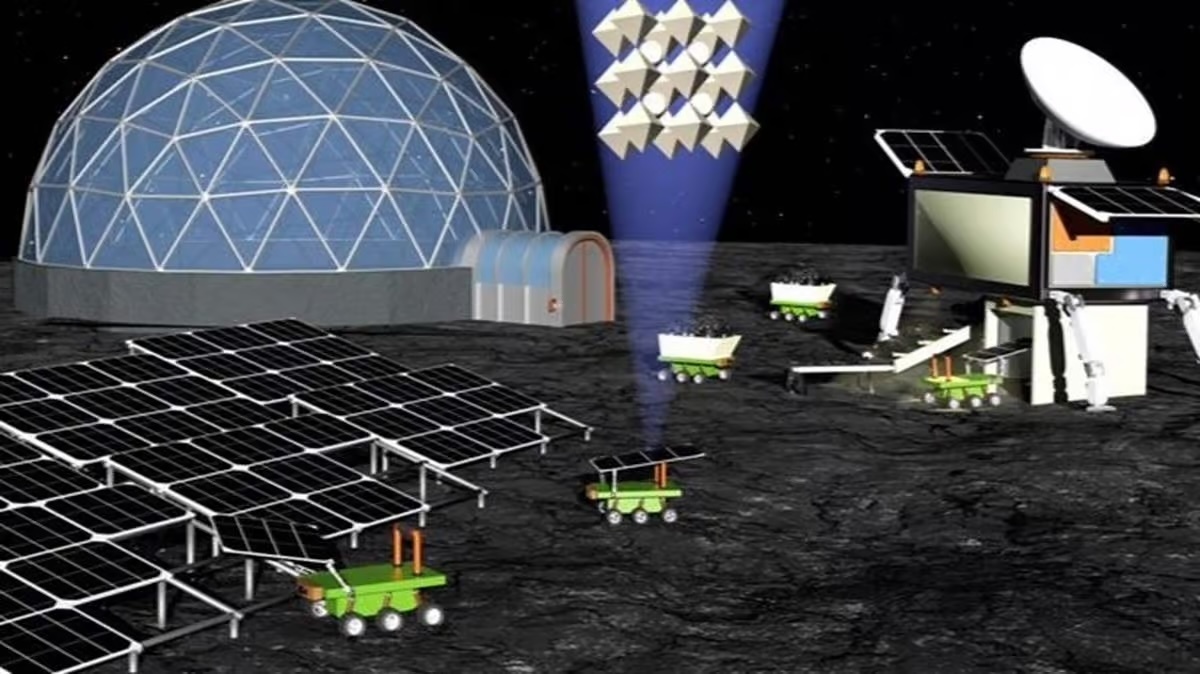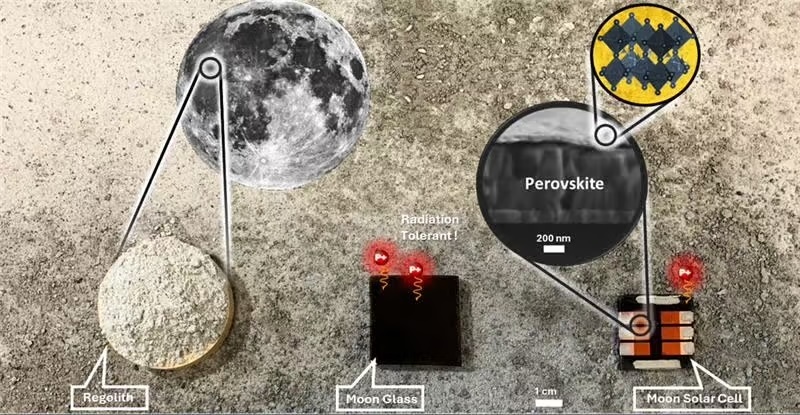5.04.2025
Researchers in Germany have recreated Moon dust to show that the lunar soil can be used to make glass for solar panels to power future human habitats on the Moon.

Simulation of solar cell fabrication on the Moon. Credit: Sercan Özen.
The production of solar cells from Moon dust is described in a paper published in the Cell Press journal Device.
The team showed that the cells convert sunlight into energy efficiently while also being able to withstand the intense solar radiation which reaches the Moon because it lacks an atmosphere.
Making glass on the Moon would remove the need to transport heavy glass panels from Earth – an expensive process.
“The solar cells used in space now are amazing, reaching efficiencies of 30% to even 40%, but that efficiency comes with a price,” says lead researcher Felix Lang of the University of Potsdam, Germany. “They are very expensive and are relatively heavy because they use glass or a thick foil as cover. It’s hard to justify lifting all these cells into space.”
Glass made on the Moon could cut a spacecraft’s launch mass by 99.4% and slash 99% of transport costs, the team say.
“If you cut the weight by 99%, you don’t need ultra-efficient 30% solar cells, you just make more of them on the Moon,” says Lang. “Plus, our cells are more stable against radiation, while the others would degrade over time.”
They tested their idea by simulating Moon dust and melting it into “moonglass”. This moonglass was then paired with perovskite – a relatively cheap crystal that is very efficient at turning sunlight into electricity.

Moon regolith simulant, moonglass, and moon solar cells. Credit: Felix Lang.
For every gram of material sent to space, the new panels produced up to 100 times more energy than traditional solar panels.
They also found that the production of moonglass is surprisingly simple. It just needs concentrated sunlight and doesn’t require complex purification.
Glass has a long history on Earth. Naturally formed glass, called obsidian, has been used by humans for tens of thousands of years. Glass blowing developed in Egypt and Mesopotamia up to 4,000 years ago.
Regions such as Murano in Italy, Glasriket in Sweden, and the Crystal Valley in the Liberec region of Czechia are world-renowned for their glass production. Could moonglass be the next big hit in glass making?
More tests are needed to see if the Moon’s lower gravity will affect how moonglass forms. And the solvents used in the experiments won’t work in the Moon’s vacuum. The lunar climate which varies from temperatures of -250°C to 121°C could also damage the moonglass.
But the team ise hopeful that further developments could enable moonglass to help build future lunar colonies.
“From extracting water for fuel to building houses with lunar bricks, scientists have been finding ways to use Moon dust,” says Lang. “Now, we can turn it into solar cells too, possibly providing the energy a future Moon city will need.”
Quelle: COSMOS
